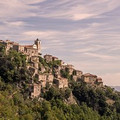的点评
Rescued temples close to Aswan High Dam
New Kalabsha的点评
点评:The Kalabsha Temples are some of the temples saved from the rise of Lake Nasser after the creation of the High Dam at Aswan by moving them to a different location. They are reasonably close to the Aswan High Dam and accessible by boat from Aswan though we visited them as part of a Lake Nasser cruise. There is apparently a road nearby but you should still need a boat to cross the lake to the island. The Kalabsha Temple itself originates from the late Greco-Roman period. There is the main structure with its pylons, hypostyle hall and ancillary colonnaded structures. Part of the reliefs have been affected by the loss of the surface plaster but they are still very detailed.
Close to the Kalabsha Temple, and usually visited together, the Temple of Beit El Wally is another substantial temple saved from the construction of the High Dam and consists of a mud-brick pylon, open courtyard, traverse hall and sanctuary dedicated to Amon-Ra, Khnum and Anuket. It dates from the time of Ramses II (c1279-1213 BC) and has some nice colour which the other Aswan temples at Philae lack. It was our first chance to see such colour (Valley of the Kings, Queens, Nobles and Dendarra and Abydos were still to come) so we were impressed. The remains of the Temple of Kertassi (Kiosk of Quertassi), basically six columns and architrave still standing, date from the early Roman era while the Victory Stela of Psamtek II and the Stela of Sety I date from an earlier period. There are some interesting Nubian touches to the decorations.
Close to the Kalabsha Temple, and usually visited together, the Temple of Beit El Wally is another substantial temple saved from the construction of the High Dam and consists of a mud-brick pylon, open courtyard, traverse hall and sanctuary dedicated to Amon-Ra, Khnum and Anuket. It dates from the time of Ramses II (c1279-1213 BC) and has some nice colour which the other Aswan temples at Philae lack. It was our first chance to see such colour (Valley of the Kings, Queens, Nobles and Dendarra and Abydos were still to come) so we were impressed. The remains of the Temple of Kertassi (Kiosk of Quertassi), basically six columns and architrave still standing, date from the early Roman era while the Victory Stela of Psamtek II and the Stela of Sety I date from an earlier period. There are some interesting Nubian touches to the decorations.
翻译:卡拉布沙神庙是阿斯旺大坝建成后,为避免纳赛尔湖水位上涨而迁至其他地方而保存下来的几座神庙之一。它们距离阿斯旺大坝相当近,可从阿斯旺乘船前往,但我们是在纳赛尔湖巡游期间参观的。附近似乎有一条路,但您仍需要乘船过湖前往岛屿。卡拉布沙神庙本身起源于希腊罗马晚期。这里有主建筑及其塔门、柱厅和辅助柱廊结构。部分浮雕因表面灰泥脱落而受到影响,但仍然非常精细。
贝特埃尔沃利神庙靠近卡拉布沙神庙,通常一起参观,是另一座因大坝建设而保存下来的重要神庙,由泥砖塔门、开放式庭院、横厅和供奉阿蒙拉、库努姆和阿努凯特的圣殿组成。它建于拉美西斯二世时期(公元前 1279-1213 年),颜色鲜艳,而菲莱的其他阿斯旺神庙则没有这种颜色。这是我们第一次有机会看到这样的颜色(帝王谷、王后谷、贵族谷以及丹达拉谷和阿拜多斯谷还有待开发),所以我们印象深刻。克尔塔西神庙(奎塔西亭)的遗迹,基本上是六根柱子和楣梁,至今仍屹立不倒,可追溯到罗马早期,而普萨姆特克二世的胜利石碑和塞提一世的石碑则可追溯到更早的时期。装饰中有一些有趣的努比亚风格。
贝特埃尔沃利神庙靠近卡拉布沙神庙,通常一起参观,是另一座因大坝建设而保存下来的重要神庙,由泥砖塔门、开放式庭院、横厅和供奉阿蒙拉、库努姆和阿努凯特的圣殿组成。它建于拉美西斯二世时期(公元前 1279-1213 年),颜色鲜艳,而菲莱的其他阿斯旺神庙则没有这种颜色。这是我们第一次有机会看到这样的颜色(帝王谷、王后谷、贵族谷以及丹达拉谷和阿拜多斯谷还有待开发),所以我们印象深刻。克尔塔西神庙(奎塔西亭)的遗迹,基本上是六根柱子和楣梁,至今仍屹立不倒,可追溯到罗马早期,而普萨姆特克二世的胜利石碑和塞提一世的石碑则可追溯到更早的时期。装饰中有一些有趣的努比亚风格。
此点评仅代表旅行者个人的主观意见,并不代表TripAdvisor以及其合作方的意见。
关于我们
|
新闻动态
|
商务合作
|
会员中心
|
业主中心
|
业主通
|
常见问题
|
意见反馈
|
联系我们
|
营业执照
© 2026 Tripadvisor 版权所有。
使用条款 |隐私政策 |网站工作原理
部分照片由 VFM Leonardo 提供。
* Tripadvisor不是旅行社,也不是旅游预订服务代理商。我们提供免费、客观、公正的旅游资讯服务。 (显示更多)
TripAdvisor LLC 既不是预订代理商,也不是旅游运营商,不会向网站用户收取任何服务费。 按照规定,在 Tripadvisor 发布机票价格、游览和旅行套餐的合作伙伴(航空公司、旅行提供商及预订代理商),其标价须包含所有费用和附加费用。 例如, 机场出入境税费、消费税与其他服务费、手续费、杂费及附加费用。 当您向我们的某个合作伙伴进行预订时,请务必查阅他们的网站以了解当地行政部门要求的所有适用费用的具体情况。 除非另有说明,机票价格通常指的是一个人的价格(以人民币计)。
为方便起见,TripAdvisor LLC 根据从我们的预订合作伙伴获取的空房率计算每个酒店的均价。 对于游览和景点来说,所显示价格通常是每位成人的最低可用价格。 对于列出的任何旅行套餐或优惠,TripAdvisor LLC 无法保证任何特定的费率或价格。 此外,酒店均价每晚会更新,并以您的首选币种表示(使用现行汇率)。 由于这些已换算的价格是预估价格,因此,有关具体金额和币种请与预订网站进行核实。
此外,TripAdvisor LLC 无法保证我们网站上宣传的价格随时有效。 标价可能需要预订一定天数才能生效,或有不可用日期、使用条件或限制。
TripAdvisor公司对外部网站的内容一概不负责。优惠价格中不含税和其他费用。
ICP证:沪B2-20200433
沪ICP备20013175号
 沪公网安备31010502005427号
沪公网安备31010502005427号鹰程信息技术(上海)有限公司
货币/国家及地区
¥CNY
中国

